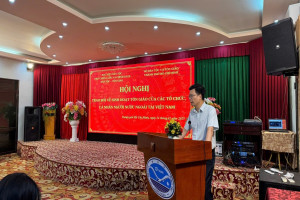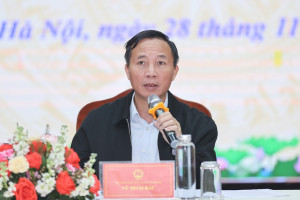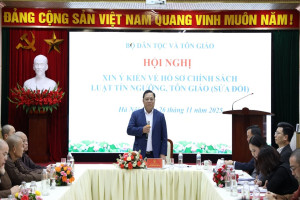
Spring is the season of festivals all over the country of Vietnam, the festival cultural space in the village. During the festival, burning incense is the important ritual
Offering also known thurify, burning incense. It’s beauty in cultural traditions, popular beliefs of the Oriental in general and the Vietnamese in particular. Offering rituals appears very early and has become an important ritual. It is indispensable in the traditional rituals as well as ancestor worship of each family in Vietnam. Incense as a bridge between the spiritual existence of man with the spiritual realms of heaven and earth and the gods.
The offering on the altar or ancestral spirits, lifting home or in communal houses, temples, pagodas, temples, sanctuaries which is a traditional cultural beauty indispensable in the soc’s day and vong’s day [1], worshipping day or Tet holiday. In items ancestors, gods necessarily have some flavor incense. Incense makes everybody feel warmly. Incense at this time was no longer a normal something, which has become a spiritual product indispensable in every family of Vietnam. Along with the other tradition, incense has contributed to preserve the identity and cultural values of Vietnamese.
In terms of meaning, incense is an expression of the desired contact with the divine. In the primitive, when people can’t explain the supernatural phenomena in the world, it led to the deification of natural phenomena and associated with each deity. Early humans also positioning the gods is the Supreme in the realm of gods and that directly govern many aspects to his own life. So people tried to communicate with spirits. So, human found many ways to communicate deities. No way can help people to getting up. When fire only found, people gradually found that a fire burnt, the smoke is raised. Since then, people would use fire to communicate with the gods.
The incense used to communicate with deities that long ago and is now difficult to determine, can only confirm that the form of burning incense was very early. Today in the paintings found in the pyramids of ancient Egypt, people have seen these images express the burning of incense. The burning of incense is popular in China then spread to other countries in East Asia in early AD.
It has created many different kinds of incense, the following three main forms: incense bullion will use finely ground wood chips [2] on a small bamboo stick by erasing certain length; incense coil is round non-core, usually conical; incense piece burnt directly to emitting fragrance. Incense piece made of sandal woods, when burning has a pleasant fragrance. According to popular perception, people often use incense odd number (1, 3, 5, 7, 9) to burn incense. Odd number represents the teeming, thriving, developed fully. And the odd numbers 3,5,7,9 are also many significant figures in sentiment and in the lives of the Oriental.
Incense has been awarded a spiritual desire, offering scents and moving plea to the gods, just to render the mind of every human being. So the Vietnamese people will be very anxious to go to festive day without incense, lamps. However, in the way of burning incense, they focus on ways that express the wish, when burning incense needs sincerely, a decent dress, attitude of respect. Vietnamese people avoid the whole bundle of incense burning and then pitch up the altar, because incense smoke inhalation often associated with the suffocating filth, impolite, not sloppy dress when making incense. Incense should pitch each up by both 2 hands and straight that it symbolizes honest, not change. From the owner of the great festival of villages usually are the elders of the village who have both talented and virtuous, to the owners of the family who usually the man in the family. While burning incense to the gods, ancestors must maintain the attitude of humility, reverence. The selection of the offering for ceremonies were conducted very carefully, otherwise there will be divine punishment rebuked. And it is an honor to be selected to carry out offering in rituals of village festival.
In many rural areas of Vietnam, people still maintain the custom of burning incense in the old trees or the corner with the concept of everything has its spiritual life, to burn incense to the gods both are responsible for the people are good weather, abundant crops, both as the death’s soul receive scent to support people have trouble at times, standstill. The incense is in the place which has a solemn, respect as well as offering incense at temples, shrines
In religion, as in popular belief, the offering is an important ritual and almost all religions have in the different forms of its ceremonies. In particular, in Buddhism, offering is indispensable ritual activities. The offering and chanting ritual always show the first in the most sacred ceremony.
In Buddhism, the incense is one of six things which called six offerings, including incense - flowers – light - tea - fruit - food [3]. The concept of Buddhist, the devotion expressed on incense smoke spiraling up and the supplies available in the wild that do not need a banquet... because true meaning of Buddhist worship should only use incense , light, fresh flowers, good fruit. Buddha is not on the altar, the statues, but in the minds of all people.
Due to the concept “Buddhist is the heart” that Buddhism promotes into the heart of every believer. The offerings have Buddhist ceremony in which products are incense to present the soul of Buddhist, the heart is more important than respect, compassion offered to the Buddha, known as Tâm hương (keep your heart to perfume). Those who undergone practice and release to achieve its, so there are 5 types of Tâm hương: Giới hương: by keeping the discipline (the regulations) to perfume; Đinh Hương by the zen (the mind wandering free from the constraints of the world) to perfume; Tue Huong: from mental (wisdom, understanding and reason the definitive delusion) to perfume; Giải Thoát Hương: know escape from suffering to perfume; Tri Kiến Hương: self-knowledge by attaining enlightenment to perfume.
In the important rituals of Buddhism, offering ceremonies are highly regarded and has a special role. Besides spiritual meaning of divine and the Buddha, the Buddha's incense also contains friendly heart and compassion. In the smoke spread along with the deep chanting, the soul of people feeling the warmth and closeness, sticking together.Not only Buddhism, but also other religions such as Christianity also used incense in their holidays. Christians in the holy incense, the altar, before the Bible, his Bible, holy wine... In ancient times, incense has more valuable than both gold and jewels. That's because Christians believe that the aromatic species of plants are given by the gods from above and having penetrated the fragrance of God. The Hindu religion is re-used as incense for relaxation and focused breathing meditation on Zen. Meanwhile, according to the Confucian, the smoke of incense also symbolizes macho level, gentleman just fly up and never dive.
Some native religions in Vietnam such as Hoa Hao Buddhism, Buu Son Ky Huong, their rituals are very simple. Hoa Hao Buddhists worships Buddha through symbols that the “trần dà” [4]. Gifts just have incense, flowers and water. With the Hoa Hao Buddhism, ancestor worship and outdoor use as well just over three things. Simple things but solemn ritual was enough to haul the great spiritual values and faith in dharma
Through space and time, offering ritual to gods, ancestors during the festival, anniversary New Year has been handed down from generation to generation. Incense becomes a spiritual product in traditional culture of Vietnam. Each of incense conveys cultural values and ethics, along with other traditional customs, have contributed to the conservation cultural values of Vietnam. / .
[1] Soc is the first day 1 (first month), Vong is the 15th (full moon day) lunar calendar.
[2] Using his hands the pulp into bamboo sticks by sharpen certain length called se hương.
[3] Lục cúng supplies offering 6 instant Buddha offerings include: incense, flower, light, tea, fruits, food. It also created the flower dance to describe the six ritual offerings to supply the Buddha.
[4] A red cloth symbolizing Buddha, like that of the bare canvas Buu Son Ky Huong. This canvas represents the heart of compassion, charity, love, solidarity…




